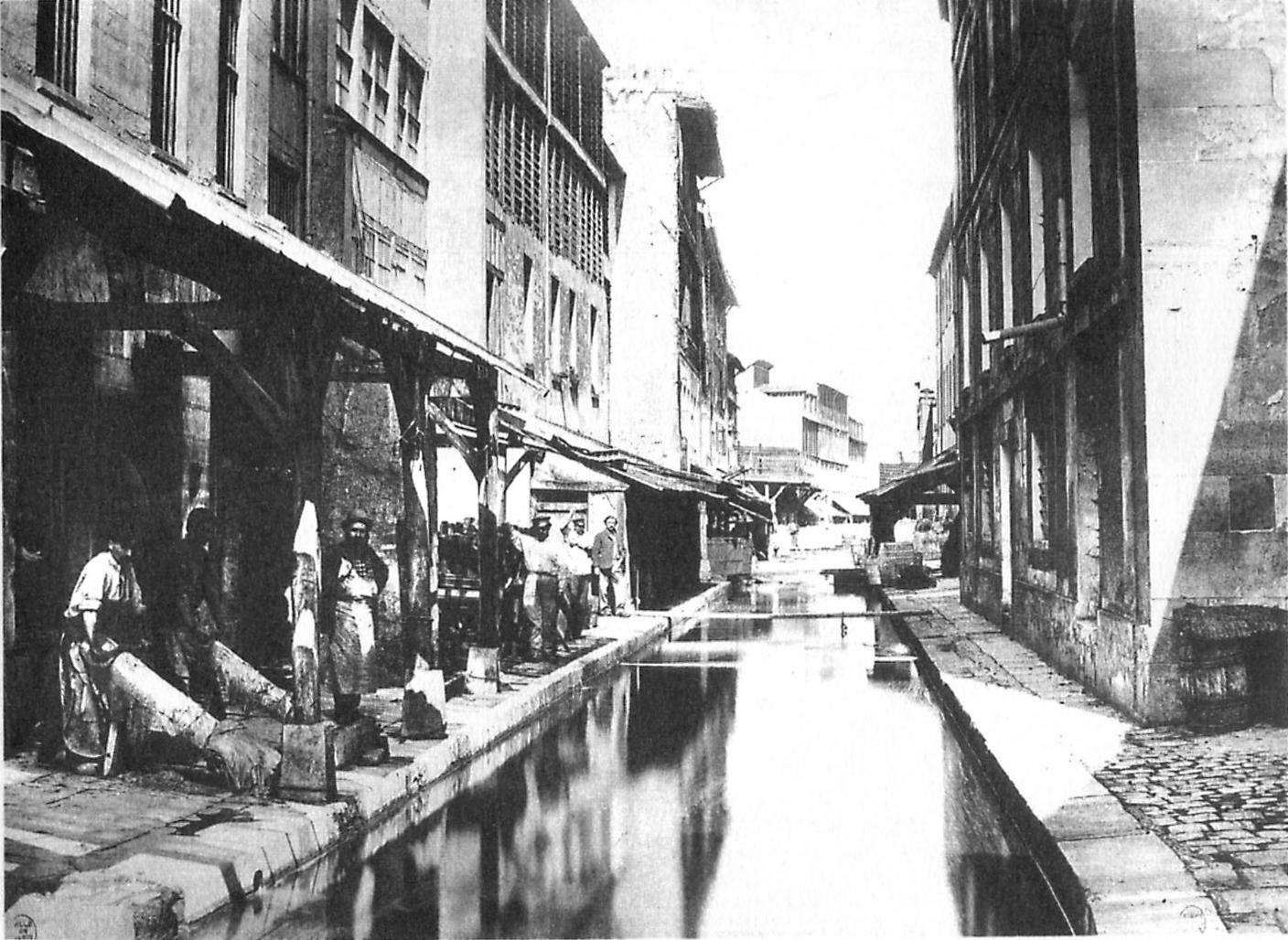Most Parisians don’t even know (or they forgot) that there has been more than one natural waterway in Paris. Other than the mythical Seine River, this river that used to nourish the first inhabitants of Paris, there also existed, until the beginning of the 20th century, the Bièvre, a 33 kilometres long river whose spring was in the Yvelines department (78) and which flew into the Seine nearby the Austerlitz Railway Station.
Nowadays, only the Bièvre outside Paris still flows in its original bed. Inside the Capital, there are only some memorial stones left here and there in commemoration of the river.

Former bed of la Bièvre. Here met the two branches of the river.
LA BIÈVRE, A CHARITABLE RIVER…
Entering Paris at the Poterne des Peupliers, the Bièvre flew through the 13th and the 5th arrondissements of Paris. From the 14th century, a lot of tanners and dyers settled down near this river, especially in the part that lies in today’s 13th arrondissement, which was back then outside the wall of Philip Augustus and therefore exonerated from all Parisian taxes.
During the following centuries, this neighbourhood grew rapidly. In addition to the numerous mills that used the water from the river, a lot of new types of trade (tanners, tawers, shoemakers, launderers, weavers…), industries and manufactures settled down in the area . The most renowned one is the Gobelins manufacture (13th arrondissement), this dying atelier that became the Royal manufacture of furniture and tapestries for the Crown.

… THEN HARMFUL
Unfortunately, this excessive urbanization over-exploited the Bièvre River, and what originally was a source for drinking water for the Parisians became slowly a polluted and stinking cesspit, and a potential transmitter of epidemics. So the big construction works led by the Baron Haussmann in the aim of cleaning up Paris finally defeated the Bièvre.
It was all buried under concrete and now doesn’t flow into the Seine any more, but rather in Paris’ sewage system.

THE BIÈVRE NOWADAYS
There is currently no really attractive route for a walk in the footsteps of the Bievre. In the 13th arrondissement, you can nevertheless find some interesting sights:
Around the Buttes aux Cailles, the lovely villages of la Cité Florale and le quartier des peupliers have been built on dry up ground of the Bièvre.
René Le Gall public garden was built on a former island shaped by the two arms of the Bievre.
Boulevard Auguste Blanqui, between Corvisart and Glacière métro stations, split up the two arms of the Bievre. You can see a memorial stone.


